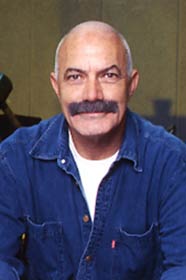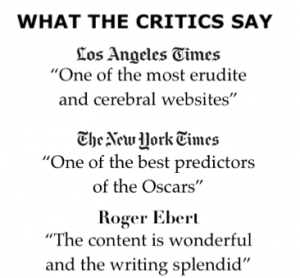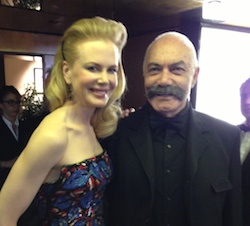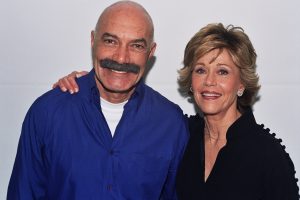




The Good Girl, Miguel Arteta’s third feature, represents a step in the right direction for him as a filmmaker, as well as for his star, Jennifer Aniston, so far best-known for her popular TV series “Friends.”
Centering on a thirtysomething woman, who’s professionally frustrated as a supermarket employee, and emotionally suffocated as a wife, this serio comedy explores the inner feelings of a woman who embarks on a self-realization journey that takes her to some unexpected places.
Though the film, written by Mike White (who also scripted Arteta’s Chuck and Buck) juggles well its ever-changing tone, from the earnest and serious to the comic and even farcical, it suffers from a detached, decidedly male point of view, which is imposed on the heroine.
That said, theatrical prospects are excellent for an enjoyable film that benefits from Aniston’s strong performance and the presence of other good actors (John C. Reilly, Tim Blake Nelson, Jake Gyllenhaal), who play the radically diverse men who shape her life.
Unlike Arteta’s previous indies, Star Maps and Chuck and Buck, which divided critics and were ultimately commercial failures, The Good Girl stands a chance to score bigger within the indie milieu and perhaps even go beyond that.
With his third consecutive film to receive its world premiere at Sundance (the first, Star Maps, was shown in American Spectrum in 1997), Arteta is evolving into an interesting filmmaker, one whose films become more accessible, but he still has a long way to go to become an accomplished filmmaker, particularly in the visual aspects of his work. Technically speaking, his movies tend to be too static for their own good and even shapeless.
As a follow-up to Chuck and Buck, The Good Girl exhibits the same quirky and warped worldview, one that’s at once critical and tolerant of human weaknesses, particularly of men. What’s new about Good Girl is that it’s Arteta’s first picture about a woman, though the three men in her lives are no different in their psychological make-up and deficiencies than those populating the previous film.
Aniston plays Justine, a young woman stuck with an ordinary sales job at a boring place, Retail Rodeo, and is unhappily married for seven years to Phil (John C. Reilly), a lazy pothead who works as a house painter and spends most of his leisure TV with his buddy, Bubba (Tim Blake Nelson). A product of middle-American brainwashing, Justine is a victim of a male-dominated culture that has told her to conform to the norms at all costs.
It was not always this way: As Justine says in the voice-overs that accompany the film, “as a girl, you see the world like a giant candy store,” but then, there reaches a point when “you want to run away, scream and cry.” For years, Justine has been wanting to start a family, but so far, she and Phil have been unable to conceive and there’s strong reason to believe that Phil is sterile.
Things change, when Justine notices at the store a new young employee who goes by the name of Holden (Jake Gyllenhaal), after the hero of J.D. Salinger’s famous novel, Catcher in the Rye. Like that celebrated protagonist, Holden is a passionate, creative rebel, full of angst and utterly dissatisfied and disgusted with anything mundane. Justine and Holden go on a date and soon they become lovers and soul mates.
As if leading a double life is not enough, Justine also finds herself as the object of desire–and blackmail–of Bubba, who has always perceived her as the ideal wife. That all three men are outsiders and problematic goes without saying, and that no relationship is really fulfilling also becomes obvious when Holden turns obsessive and suicidal.
Arteta variegates the proceedings with somber episodes that alternate with farcical and absurdist ones. But his intent to tell a simultaneously heart-wrenching and humorous tale is not always successful. Some scenes are extremely static and broad in the manner of a TV sitcom, as for example, the routine evenings that Justine spends with Phil and Bubba, without having much to say to either man. Moreover, it’s never clear what exactly kept the marriage survive for years, or what attracted Justine to Phil in the first place.
Arteta has described Good Girl as “a comic ode to depression,” a challenge that his film doesn’t always win. Arteta is also not effective in portraying stifling monotony in an interesting, let alone humorous way. And his tendency to turn every film he’s directed, no matter what the central situation or characters are, into pathos doesn’t help either. This was most evident in Star Maps, about a merciless patriarch who’s the pimp of his own son, but there are traces of cheap sentimentalism in the new picture as well.
It’s usually hard for a male writer or director to illuminate the inner workings of a woman’s psyche and soul, a task that was splendidly met by Victor Nunez in his masterpiece, Ruby in Paradise. I contrast, The Good Girl is not only marked by an outside male perspective, but it’s also not convincing in the choice that Justine makes at the end of her journey, one likely to upset feminist viewers. At the end of the yarn, Arteta would like the viewers to pose the question of whether Justine is a good girl, but the more relevant issue is what lessons–if any–Justine has absorbed as a result of her affairs with three undeserving males.










